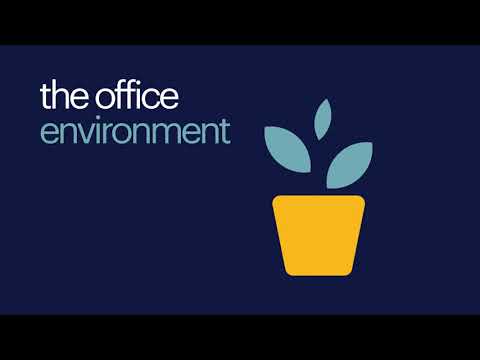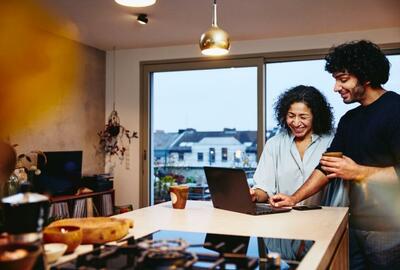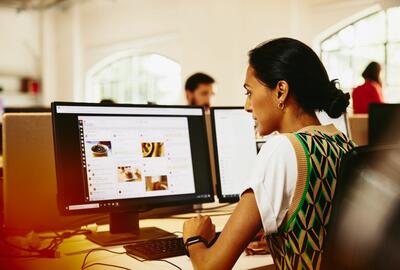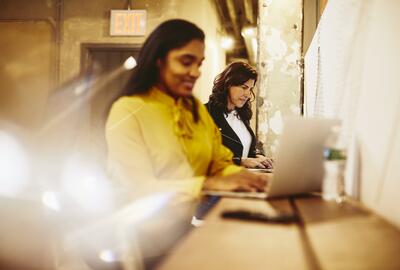Returning to the office during the Covid-19 pandemic.
As the country looks to start returning back to offices after months of remote and flexible working, many organisations will be asking how do we return to the office environment safely and can we adapt to the Coronavirus pandemic?
From administration to sales, and from customer service to marketing, workplaces across multiple sectors are now planning to reopen their office doors. With Government advice frequently changing and adapting itself to the latest updates on the COVID-19 situation, at Randstad we aim to stay up-to-date with their advice, learn from offices which have started to reopen both internationally and nationally and inform you about the best practice of staying safe at work.
Should it be here are our top tips to keep your employees safe as we return to work.
Five key ways to stay safe in the office:
- Stagger your resource
- Communicate, communicate, communicate
- Arrive and leave work safely
- Reconsider the office environment
- Change the way meetings work
Staying safe in the office: a video overview.
Stagger your resource.
Throughout the period of lockdown, the work and dedication of our employees has been key to keep businesses going, and to ensure that we can still provide key services to those who need them: whether working from home full time, fitting tasks in between childcare, or working flexibly between home and work when safe to do so.
Therefore it is only right that we ensure that we continue to keep these employees as safe as possible when they return to work. A key way to do this is to stagger your resource when planning your return. Some important things to consider when doing so are:
- Don’t encourage everyone to return to the office at once
- Identify and prioritise groups of returners
- Promote continuing to work from home flexibly if possible
- Have a plan to protect people at higher risk
- Make reasonable arrangements and carry out individual risk assessments where necessary
This process will ensure that sensible measures are put in place to control the obvious risks of returning to work for all parties involved. It will also ensure that your health and safety policies are tailored for your specific needs.
Want more information on specific health and safety policies? You may have seen the comprehensive guide we recently put together with Adecco and Manpower on Safely Returning to Work. It even sparked a conversation with our CEO, Jacques van den Broek, on the BBC. In addition to this, our office-specific health and safety checklist is a great way to ensure you have everything in place and will enable you to focus on the points that are most relevant to you.
Click here to download our returning to the office checklist
Communicate well and often.
All staff must be informed of the latest updates about their requirements for coming into work. Whether they are on furlough, working from home or you are looking for new staff, the guidance decided for your workplace will need to be relayed to them quickly and efficiently.
Our top tips for communication are as follows.
- Clear, consistent and regular communication
- Create a briefing pack or checklist for employees ahead of their return
- Check for accurate email addresses and phone numbers
- Listen to feedback
Communication is a two-way street, you need to hear from your employees as well as tell them what they need to be doing to stay safe. If your employees are concerned about their health or are classed as at risk what can you do to support them? Think of everything from physical to psychological to financial concerns, and ensure you are ready to support everyone where you can.
Arrive and leave work safely.
In many work settings, the government has recommended doing things like staggering start and finish times and ensuring that only a small number of people have breaks at the same time to keep people as safe as possible.
To do this, you can:
- Stagger start and end times for different teams
- Provide additional parking spaces and bike racks
- Provide storage for clothes and bags
- Use marking tape/posters and have one-way flow at entry/exit points
- Create pop up handwashing/hand sanitising stations and build time in the day for employees to use these
- Stagger break and lunch times for different people - encourage employees to bring in a packed lunch in a sealed plastic container where possible
All of these points will work together to protect you and your employees
The office environment.
Encourage 2m safe distancing where possible.
It’s important to minimise contact between people where possible, to ensure that employees across the company are kept safe. Ways to do this include:
- Arranging open spaces so that desks are far apart
- Arrange for people to sit safely side by side or facing away from each other
- Use screens to separate work stations
- Put 2m distance marks in corridors and communal areas
In addition to this, it is important to ensure that your staff are clued up with the latest health and safety information on keeping your workplace well managed. You can read our full article on facilities management during Covid-19, and some top tips on keeping your l building hygienic are below:
- Raise humidity above 40%, maintain warm temperatures and clean thoroughly - generally, viruses thrive in cold, dry conditions
- Restrict visitors to essential only
- Screen visitors before entry - temperature checks
Install pop up handwashing stations.
Whether it’s singing happy birthday in your head twice, or counting out loud while you wash your hands, it’s important to ensure that all staff regularly wash their hands to maintain good hygiene.
To make sure that everyone can do this safely, it’s a good idea to install pop up hand sanitizing stations in corridors and communal areas. This will avoid long queues for bathrooms.
It is also recommended that all meeting rooms are wiped down between usage, so it is a good idea to keep a supply of sanitising wipes in every room.
Meetings.
Obviously, meetings can be a key part of the working day, and many companies have worked hard to keep meetings going where possible by using video conferencing technology.
When going back to the office and resuming more face to face meetings, some things to consider are:
- Have meetings outdoors where possible
- Continue to use online meeting tools
- Use well-ventilated meeting rooms
- Maintain 2m distance between people
It is also important to ensure that employees use communal office space safely and responsibly. Some ways to do this are:
- Avoid using lifts where possible
- Stagger the use of breakout areas/canteens
- Work with landlords and other tenants in shared office buildings
If you would like further information or advice on anything mentioned above, please contact us.









